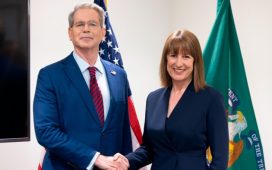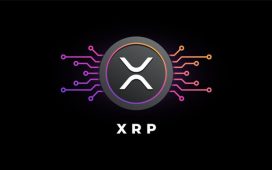On August 9, 2023, President Joe Biden signed a long-anticipated executive order (EO) directing the Department of the Treasury (Treasury) to promulgate regulations to stem U.S. cross-border investments that support the “advancement by countries of concern in sensitive technologies and products critical for [those countries’] military, intelligence, surveillance, or cyber-enabled capabilities.” The only currently identified “country of concern” is the People’s Republic of China, along with Hong Kong and Macao. It is possible that legislation will expand the scope of controls on outbound investment beyond what is envisioned in the EO.
In tandem with the issuance of this EO, on August 14, 2023, Treasury published an Advance Notice of Proposed Rulemaking (ANPRM) outlining proposed details for its new outbound investment regulations and seeking public comment. Public comments may be submitted to Treasury here by September 28, 2023.
The high-level takeaways based on EO and the proposal in the ANPRM are as follows:
- The EO was the result of years of deliberations in consultation with domestic and international partners. We expect that final regulations are at least another year away. While the ANPRM is fairly detailed, many concepts need further refining and elaboration. Stakeholders should take advantage of the comment period to provide input on Treasury’s proposed approach.
- No transactions will be prohibited or notifiable until the final regulations are issued and enter into force. However, after the regulations become effective, Treasury may request information about transactions that were completed or agreed to after August 9, 2023.
- The new regulations will initially cover only three sectors (semiconductors and microelectronics, quantum information technologies, and artificial intelligence (AI)). Only a relatively narrow set of technologies within these three broad categories will be prohibited. The regime will not cover other sectors, such as biotechnology, large-capacity batteries, critical minerals, or clean energy technology, that had at various times been identified as potential candidates for inclusion.
- The new regime covers certain types of investments, not other commercial arrangements such as supply contracts, intellectual property licensing, or bank lending.
- The new regime prohibits certain transactions and subjects others to a notification requirement. The compliance burden falls entirely on the transaction parties. Unlike the Committee on Foreign Investment in the United States (CFIUS) process, there will be no case-by-case reviews of transactions. However, like CFIUS, Treasury may order divestment, prohibition of a transaction, and other civil or criminal penalties in the event of noncompliance.
The following Q&A is based on the parameters set forth in the ANPRM. The details of the final regulations may differ from the proposal.
The EO is available here. The ANPRM is available here. Treasury’s fact sheet and press release summarizing the ANPRM are also available here and here, respectively.
1) What investments will be covered?
The regulations will cover (1) certain “covered transactions,” that is, investments (2) by a U.S. person (3) in a “covered foreign person” that is (4) engaged in identified activities regarding “covered national security technology and products.”
Some covered transactions will be prohibited altogether, while others will be subject only to a notification requirement.
- a) What types of investments will constitute a “covered transaction”?
Covered transactions include direct or indirect
- acquisitions of equity interests and contingent equity interests
- provision of debt financing convertible to an equity interest
- greenfield investment that could result in the establishment of a covered foreign person
- establishment of a joint venture formed with a covered foreign person or that could result in the establishment of a covered foreign person
A covered transaction would not include
- passive investments into publicly traded securities
- passive investments into an “index fund, mutual fund, exchange-traded fund, or a similar instrument (including associated derivatives) offered by an investment company … or by a private investment fund”
- passive investments made as a limited partner below a de minimis level (still to be determined) into a venture capital fund, private equity fund, fund of funds, or other pooled investment funds, where the contribution is solely capital and the limited partner has no influence or decisionmaking over the fund or the “covered foreign person,” and no debt responsibility beyond the investment
- the acquisition of all of a covered foreign person’s interests “in an entity or assets located outside of a country of concern”
- intracompany transfers of funds from a U.S. parent company to a subsidiary located in a country of concern
- transactions “made pursuant to … binding, uncalled capital commitment[s] entered into” before August 9, 2023
The following transactions would not be covered unless they involve any of the definitional elements of a “covered transaction: university research collaborations; procurement agreements for material inputs (e.g., raw materials) for covered technologies or products; intellectual property licensing arrangements; certain bank services (e.g., payment processing, lending, and underwriting); debt rating services; prime brokerage; global custody; equity research or analysis; or other services secondary to a transaction.”
The ANPRM also indicates that there may be exemptions from the regulatory prohibitions for specific covered transactions that provide an extraordinary benefit to U.S. national security (or an extraordinary national security benefit that “overwhelmingly outweighs relevant U.S. national security concerns”).
- b) Who is a covered “U.S. person”?
“U.S. persons” means
- U.S. citizens,
- lawful permanent residents,
- persons located in the United States;
- businesses organized in the United States, or
- foreign branches of businesses organized in the United States.
- c) Who is a “covered foreign person”?
A “covered foreign person” includes any
- “person of country of concern” engaged in, or that a U.S. person knows or should know will be engaging in, certain identified activity regarding covered national security tech or product
- parent entity whose direct or indirect subsidiaries or branches are “persons of a country of concern” and account for 50% or more of such the parent’s revenue, income, capex, or opex
The Annex to the EO designates only China, along with Macau and Hong Kong, as a “country of concern.” However, the President may modify the Annex to the EO and update the list of countries of concern.
A “person of a country of concern” means
- a non-U.S. citizen or lawful permanent resident who is a citizen or permanent resident of country of concern;
- an entity with its principal place of business, or that is incorporated or organized under, the laws of country of concern;
- the government of a country of concern; or
- an entity owned ≥ 50% by the above (which could include, e.g., U.S. subsidiaries of a Chinese parent).
- d) What activities regarding “covered national security technology and products” will be covered?
The identified activities pertain to certain specific technologies related to semiconductors and microelectronics; quantum information technologies; or AI. Attachment A to this update provides further details.
2) What is the consequence of a notification?
None. It appears that Treasury intends to use information collected through the notifications to determine whether to expand or modify the scope of any regulations. In addition, the EO requires Treasury to provide an annual report to the President (within one year of the effective date of the regulations issued) on the effectiveness of the outbound investment program and explicitly recognizes that information collected through notifications will inform these reports.
U.S. persons must submit the required notifications at least 30 days before the relevant transaction closes.
3) Will there be a process for determining whether a transaction is prohibited?
No. Unlike the CFIUS process, where transaction parties can submit a declaration or notice to obtain clearance for a transaction (or clearance with mitigation), there is no approval process contemplated for the outbound screening program. Transaction parties are responsible for determining whether a transaction is prohibited or subject to notification. Divestment and civil and criminal penalties may be imposed if they do not comply.
4) Will the regulations impose a strict liability standard?
No. A U.S. person’s obligations will be conditioned on a knowledge requirement; for example, a transaction will be prohibited or subject to notification when the U.S. person has “actual or constructive knowledge that the covered foreign person is engaged in, or will foreseeably be engaged in, certain activity regarding the technology or product.” This means that “a U.S. person would need to know, or reasonably should know based on publicly available information and other information available through a reasonable and appropriate amount of due diligence, that it is undertaking a transaction involving a covered foreign person and that the transaction is a covered transaction.”
5) Are foreign subsidiaries of U.S. companies treated as “U.S. persons”?
Foreign branches of U.S. parent companies are U.S. persons, but foreign subsidiaries of U.S. parents are not. However, U.S. persons will need to (1) notify “any transaction by a foreign entity controlled by such United States person that would be a notifiable transaction if engaged in by a United States person” and (2) “take all reasonable steps [which may include contractual commitments, internal policies, training and reporting, exercise of governance rights, and other measures] to prohibit and prevent any transaction by a foreign entity controlled by such United States person that would be a prohibited transaction if engaged in by a United States person.” The ANPRM proposes to define “controlled foreign entity” as “a foreign entity in which a U.S. person owns, directly or indirectly, a 50 percent or greater interest.”
6) Will the regulation cover U.S. persons who work for, or direct the activities of, non-U.S. persons?
Yes. The regulations may bar U.S. persons from “knowingly directing” transactions by non-U.S. persons if such dealings would be “prohibited transactions” if engaged in by a U.S. person. The restriction would prohibit U.S. corporate officers and directors from ordering or approving investments by foreign branches or subsidiaries, or foreign funds, into Chinese entities involved in the covered technology sectors. The proposal would also cover, for example, a U.S. person acting as a general partner of foreign fund, a U.S. person, or U.S. venture partners launching and directing a foreign fund.
7) How will Treasury enforce the outbound investment program?
Treasury is authorized to “investigate and make requests for information” from relevant persons about “notifiable or prohibited transactions … including through the use of civil administrative subpoenas as appropriate.”
Treasury is also authorized to “nullify, void, or otherwise compel the divestment of any prohibited transaction” executed after Treasury’s regulations take effect. Treasury is contemplating civil penalties and may refer matters to the Department of Justice for criminal prosecution.
8) When will the regulations take effect?
The ANPRM outlines certain parameters that Treasury is considering and requests comment by September 28, 2023. The next step in the process will be the release of a proposed rulemaking and then a final rulemaking. Treasury has not set any deadlines for the proposed or final rulemaking. It is possible that final regulations would be issued by mid- to late 2024.
9) Will the regulations be retrospective?
No. The regulations will apply prospectively (i.e., they will not prohibit or require the notification of transactions that close before the regulations become effective). Treasury intends to use this information to help calibrate and implement this new outbound investment program.
10) Could Treasury modify or expand the list of covered sectors, technologies, and products?
Within one year of the effective date of the regulations, Treasury, together with Commerce and other agencies as appropriate, will assess whether to add or remove technologies and products in the semiconductors and microelectronics, quantum information technologies, and AI sectors to the list of covered technologies and products.
Treasury cannot unilaterally extend the outbound investment program to cover new sectors outside of the three sectors already covered but may recommend that the President modify the EO to add or remove sectors.
“Covered National Security Technology and Products”
(Attachment A)
|
Sector |
“Prohibited Investment” Activities |
“Notifiable Investment” Activities |
|
Semiconductors and micro-electronics |
Entities engaged in the development of certain software and equipment designed “exclusively” for semiconductor development Entities engaged in the design, fabrication, or packaging of certain advanced integrated circuits Entities engaged in the “installation or sale to third-party customers” of certain supercomputers (This list covers a similar, but somewhat broader, set of products as compared to the Bureau of Industry and Security’s October 7, 2022, rule restricting exports of certain advanced computing and semiconductor manufacturing equipment to China. We wrote about that interim final rule in a separate update here.) |
Entities engaged in the design, fabrication, and packaging of all other integrated circuits not captured within the “prohibited investment” activities |
|
Quantum information technologies |
Entities engaged in the development of quantum computers, “dilution refrigerator[s], or two-stage pulse tube cryocooler[s]” Entities engaged in “[t]he development of a quantum sensing platform designed to be exclusively used for military end uses, government intelligence, or mass surveillance end uses” Entities engaged in the “development of a quantum network or quantum communication system designed to be exclusively used for secure communications, such as quantum key distribution” |
None |
|
AI |
Entities “engaged in the development of software that incorporates an AI system and is designed to be exclusively* used for military, government intelligence, or mass-surveillance end uses”** *(Treasury is considering using the word “primarily” instead of “exclusively.” This change would expand the range of AI software covered by the “prohibited transaction” rules) **(Treasury proposes to define AI as “an engineered or machine-based system that can, for a given set of objectives, generate outputs such as predictions, recommendations, or decisions influencing real or virtual environments. AI systems are designed to operate with varying levels of autonomy”) |
Entities engaged in “the development of software that incorporates an [AI] system and is designed to be exclusively* used for: cybersecurity applications, digital forensics tools, and penetration testing tools; the control of robotic systems; surreptitious listening devices that can intercept live conversations without the consent of the parties involved; non-cooperative location tracking (including international mobile subscriber identity (IMSI) Catchers and automatic license plate readers); or facial recognition” *(Treasury is considering using the word “primarily” instead of “exclusively.” This change would expand the range of AI software covered by the “notifiable transaction” rules) |










